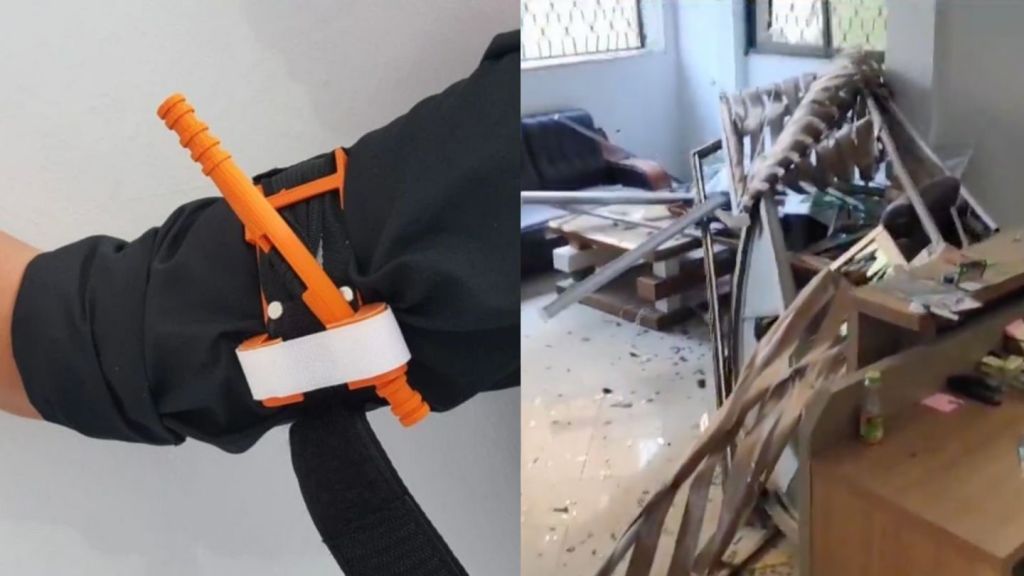
Aleksander Kuskov, Time Machine. Image courtesy the artist
This piece is part of our Dimension Defying Series, in which we explore artists who, like the Marvel character Doctor Strange, transcend physical, dimensional, perceptual, and conceptual limitations.
The most compelling thing about 3D art is how it plays with our perceptions. The rapidly evolving discipline doesn’t necessarily need to be tied to CGI by way of fancy computer programs, either. In fact, the technique of trompe l’oeil dates as far back as 1600. Of course, sophisticated tools do help, and technology is certainly opening the floodgates for talented 3D artists to translate what’s seen in the mind’s eye and create a visual representation for audiences. But some of the best 3D artists can create multidimensional illusions with nothing more than pen and paper, or a sidewalk and chalk. Either way, the effect is always exhilarating.
Videos by VICE
Three-dimensional street art is a form of anamorphosis, meaning that audiences are required to see the work from a particular perspective in order to appreciate the effect. Its practitioners are nicknamed madonnari, because early street artists often used the traditional religious imagery as subjects. Born in 1968, German artist Edgar Müller got into the genre early, and won a street-art painting competition at the age of 19. He soon decided to concentrate exclusively on painting on pavements, representing images from classical paintings in cities across Europe. Müller is a modern version of the madonnari, and in the past, has created digital drafts for his artwork in Photoshop, which led some to question the authenticity of his creative process. But the fact remains that it is just that: a process, and his final versions are always rendered on the streets—and are always amazing.

Aleksander Kuskov. Image courtesy the artist
When it comes to digital art, Kiev-based artist Aleksandr Kuskov is a Renaissance man. His work is generated for a variety of purposes, including industrial, automotive, character, and graphic design. He also works as a freelance illustrator and art director, and his art has appeared in both digital and print advertising. As an expert animator, engineer, and renderer, it was only a matter of time before Kuskov’s art became convincingly 3D. Whether it’s a typewriter, a mythic female Valkyrie, or a goldfish, Kuskov manages to bring a multidimensional perspective to his wide-ranging art practice, making him one of the leading figures in 3D art today.

Bianca Oravecz. Image courtesy of the artist
Based in Vienna, Austria, Bianka Oravecz creates peculiar CGI artworks in pale, soft, and muted hues. The textures of her curious renderings are what give them a distinctly 3D air, but unlike the multidimensional work of many of her contemporaries, much of Oravecz’s subjects are practically unrecognizable. They are unfamiliar forms born in the liminal space between reality and make-believe; they are vaguely identifiable, but more often, nebulous and amorphous shapes without structure. When they do have a composition, they are just as unidentifiable, acting as dreamlike relics of human consciousness that, as with any true artist, are tied exclusively to their mastermind—in this case, Oravecz herself.

Bianca Oravecz. Image courtesy the artist
Doctor Strange is in theaters November 4. Get tickets here.
This content was paid for by the advertising partners and was created in collaboration with VICE creative services, independently from The Creators Project editorial staff.
Related:
3D Art That Explores the Collective Unconscious



